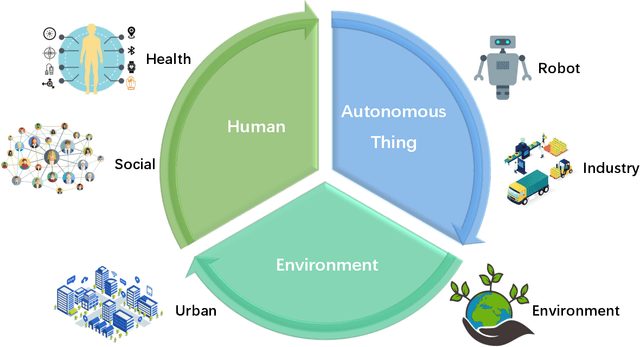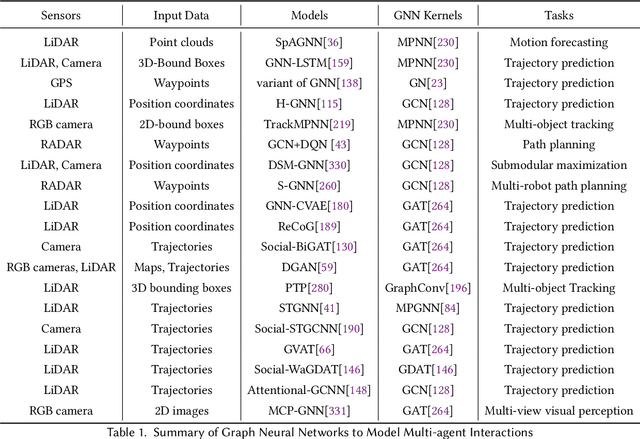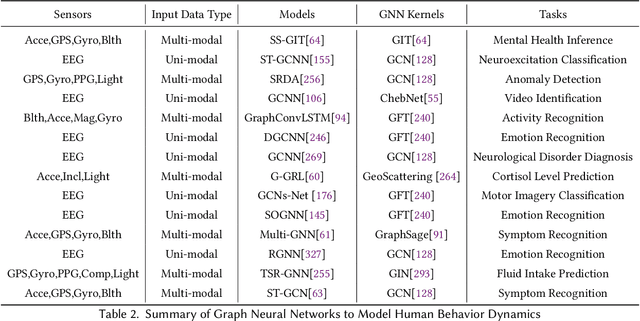Mingyue Tang
Incremental Semi-supervised Federated Learning for Health Inference via Mobile Sensing
Dec 19, 2023Abstract:Mobile sensing appears as a promising solution for health inference problem (e.g., influenza-like symptom recognition) by leveraging diverse smart sensors to capture fine-grained information about human behaviors and ambient contexts. Centralized training of machine learning models can place mobile users' sensitive information under privacy risks due to data breach and misexploitation. Federated Learning (FL) enables mobile devices to collaboratively learn global models without the exposure of local private data. However, there are challenges of on-device FL deployment using mobile sensing: 1) long-term and continuously collected mobile sensing data may exhibit domain shifts as sensing objects (e.g. humans) have varying behaviors as a result of internal and/or external stimulus; 2) model retraining using all available data may increase computation and memory burden; and 3) the sparsity of annotated crowd-sourced data causes supervised FL to lack robustness. In this work, we propose FedMobile, an incremental semi-supervised federated learning algorithm, to train models semi-supervisedly and incrementally in a decentralized online fashion. We evaluate FedMobile using a real-world mobile sensing dataset for influenza-like symptom recognition. Our empirical results show that FedMobile-trained models achieve the best results in comparison to the selected baseline methods.
Personalized State Anxiety Detection: An Empirical Study with Linguistic Biomarkers and A Machine Learning Pipeline
Apr 19, 2023Abstract:Individuals high in social anxiety symptoms often exhibit elevated state anxiety in social situations. Research has shown it is possible to detect state anxiety by leveraging digital biomarkers and machine learning techniques. However, most existing work trains models on an entire group of participants, failing to capture individual differences in their psychological and behavioral responses to social contexts. To address this concern, in Study 1, we collected linguistic data from N=35 high socially anxious participants in a variety of social contexts, finding that digital linguistic biomarkers significantly differ between evaluative vs. non-evaluative social contexts and between individuals having different trait psychological symptoms, suggesting the likely importance of personalized approaches to detect state anxiety. In Study 2, we used the same data and results from Study 1 to model a multilayer personalized machine learning pipeline to detect state anxiety that considers contextual and individual differences. This personalized model outperformed the baseline F1-score by 28.0%. Results suggest that state anxiety can be more accurately detected with personalized machine learning approaches, and that linguistic biomarkers hold promise for identifying periods of state anxiety in an unobtrusive way.
Graph Neural Networks in IoT: A Survey
Mar 31, 2022



Abstract:The Internet of Things (IoT) boom has revolutionized almost every corner of people's daily lives: healthcare, home, transportation, manufacturing, supply chain, and so on. With the recent development of sensor and communication technologies, IoT devices including smart wearables, cameras, smartwatches, and autonomous vehicles can accurately measure and perceive their surrounding environment. Continuous sensing generates massive amounts of data and presents challenges for machine learning. Deep learning models (e.g., convolution neural networks and recurrent neural networks) have been extensively employed in solving IoT tasks by learning patterns from multi-modal sensory data. Graph Neural Networks (GNNs), an emerging and fast-growing family of neural network models, can capture complex interactions within sensor topology and have been demonstrated to achieve state-of-the-art results in numerous IoT learning tasks. In this survey, we present a comprehensive review of recent advances in the application of GNNs to the IoT field, including a deep dive analysis of GNN design in various IoT sensing environments, an overarching list of public data and source code from the collected publications, and future research directions. To keep track of newly published works, we collect representative papers and their open-source implementations and create a Github repository at https://github.com/GuiminDong/GNN4IoT.
Graph Auto-Encoder Via Neighborhood Wasserstein Reconstruction
Feb 18, 2022



Abstract:Graph neural networks (GNNs) have drawn significant research attention recently, mostly under the setting of semi-supervised learning. When task-agnostic representations are preferred or supervision is simply unavailable, the auto-encoder framework comes in handy with a natural graph reconstruction objective for unsupervised GNN training. However, existing graph auto-encoders are designed to reconstruct the direct links, so GNNs trained in this way are only optimized towards proximity-oriented graph mining tasks, and will fall short when the topological structures matter. In this work, we revisit the graph encoding process of GNNs which essentially learns to encode the neighborhood information of each node into an embedding vector, and propose a novel graph decoder to reconstruct the entire neighborhood information regarding both proximity and structure via Neighborhood Wasserstein Reconstruction (NWR). Specifically, from the GNN embedding of each node, NWR jointly predicts its node degree and neighbor feature distribution, where the distribution prediction adopts an optimal-transport loss based on the Wasserstein distance. Extensive experiments on both synthetic and real-world network datasets show that the unsupervised node representations learned with NWR have much more advantageous in structure-oriented graph mining tasks, while also achieving competitive performance in proximity-oriented ones.
 Add to Chrome
Add to Chrome Add to Firefox
Add to Firefox Add to Edge
Add to Edge